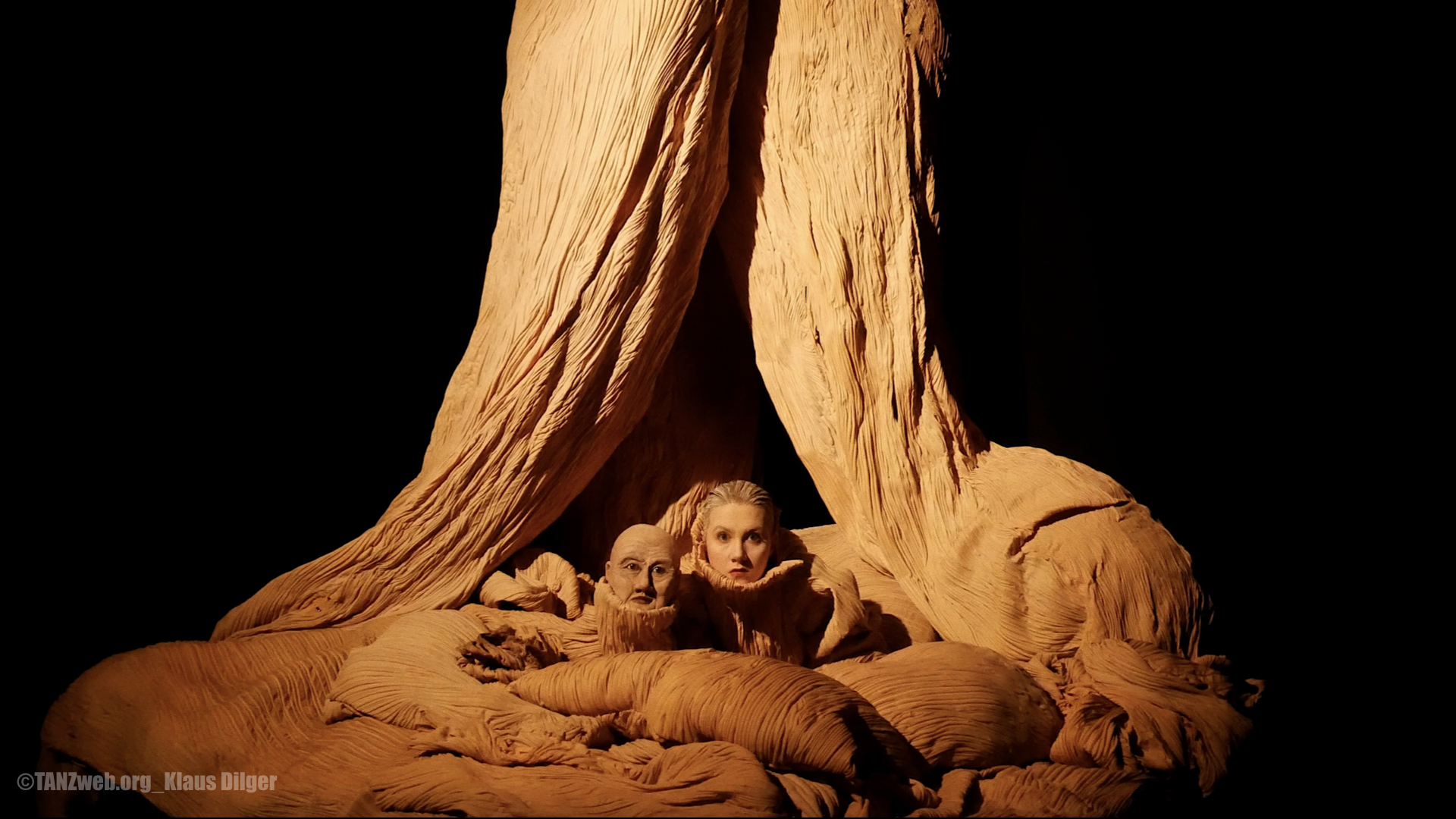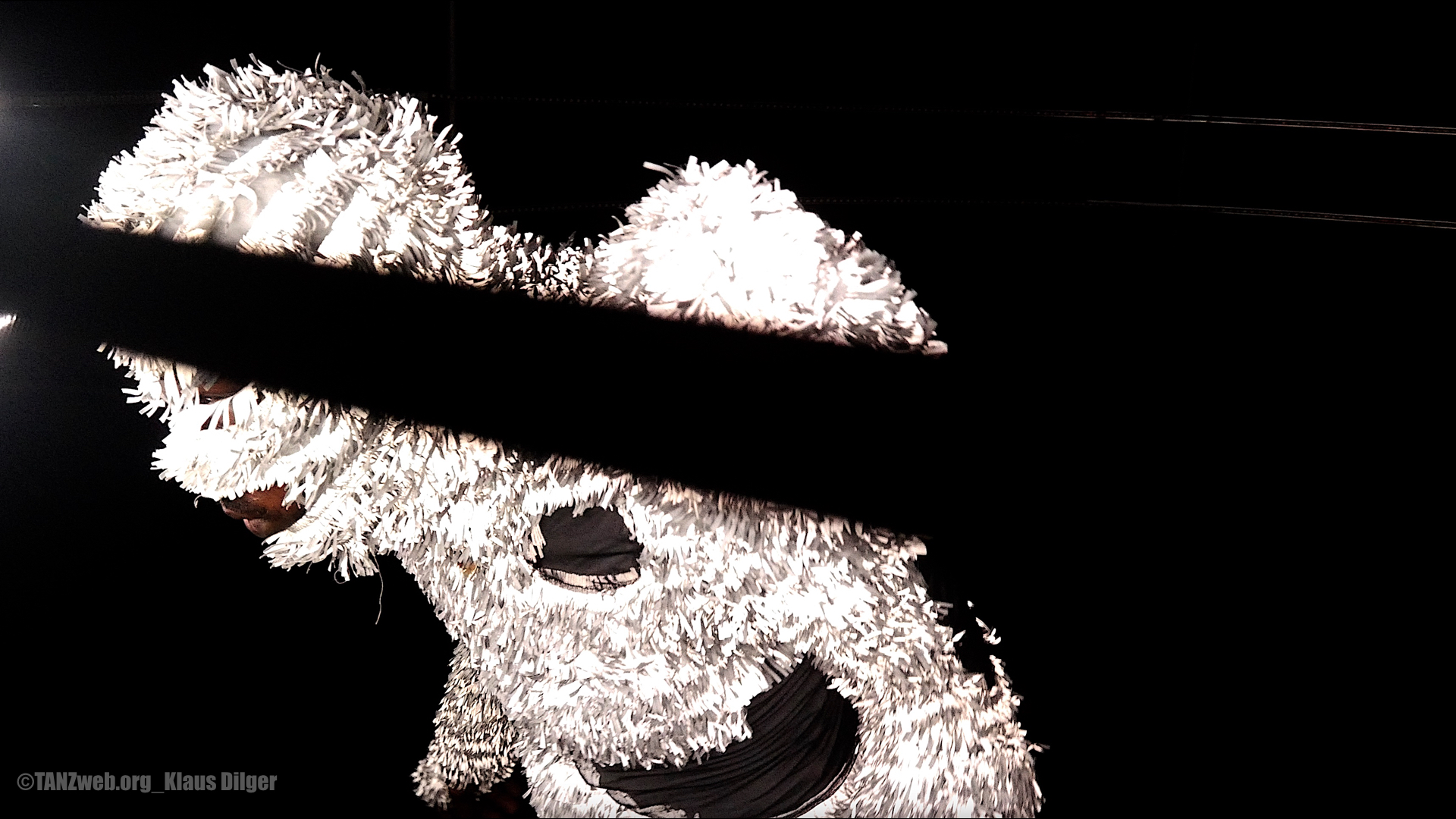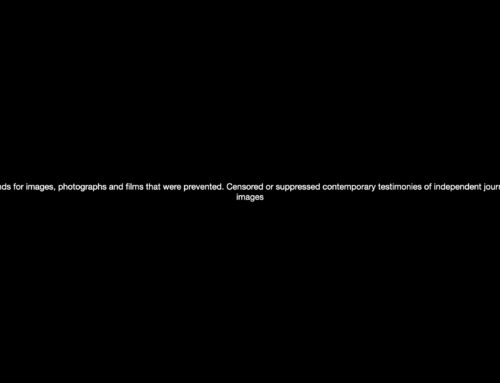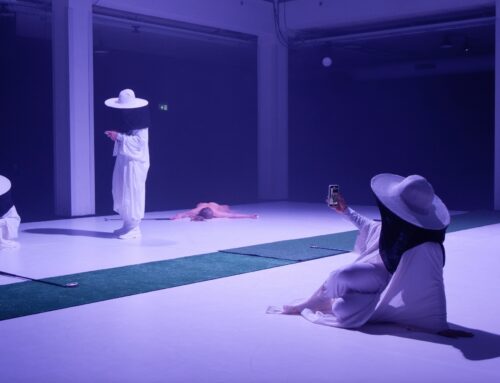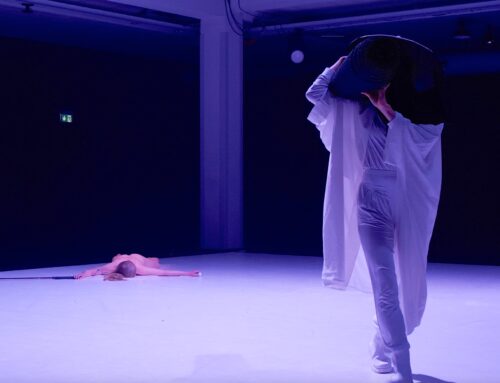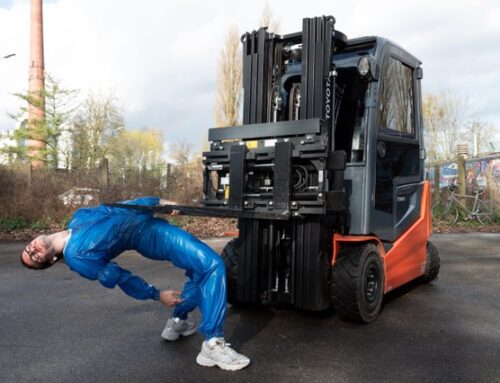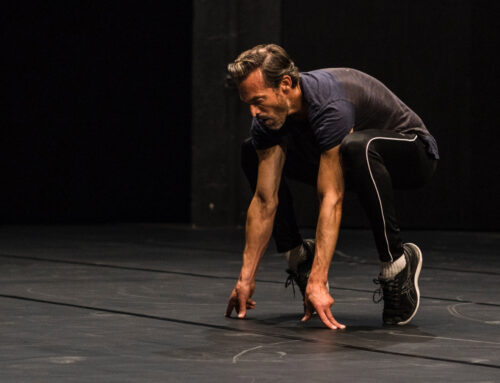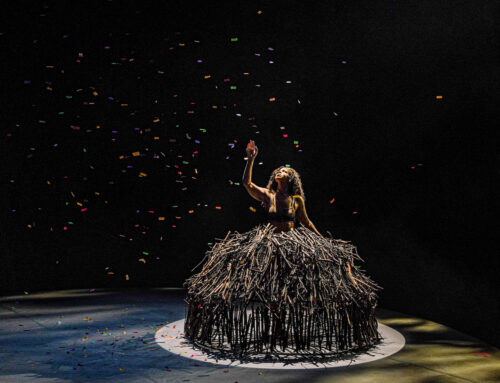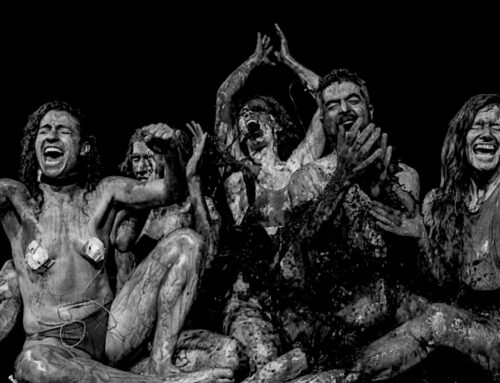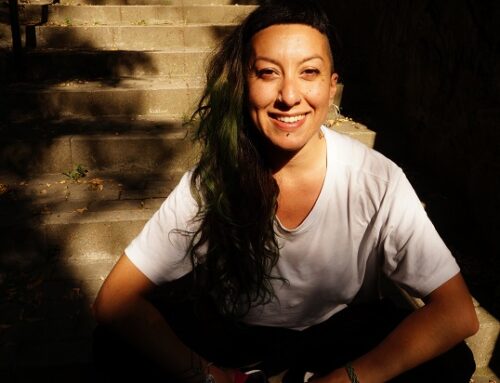The Festival Specials of schrit_tmacher justDANCE! 2023 in Aachen
Dance in the morning, in the museum and in music
The first weekend of this year’s 28th edition of schrit_tmacher justDANCE! 2023 offered exclusives under the title „Festival Specials“: the performative experience „Double Helix“ by Nanine Linning at Fabrik Stahlbau Strang, the German premiere of Trajal Harrell’s solo dance piece „Sister or He Buried the Body“ at Ludwig Forum and the concert „Danse – Dance – Dans – Danza – Tanz!“ at the University of Music and Dance
by Natalie Broschat
translated by Karoline Strys
Dance Company Nanine Linning’s „Double Helix“ at Fabrik Stahlbau Strang
„Double Helix“ already premiered in Offenburg in 2019. Corona let it sleep like so many other works, which is why it is all the more gratifying that the performance can now go on tour again. In the cool and gloomy Fabrik Stahlbau Strang in the northeast of Aachen, four rooms are constructed by huge walls of molton cloth, each containing two to five installations, all of which show „the effects of biotechnological developments in our society and in our bodies“. Associations with body horror, films by David Cronenberg, „The Last of Us,“ mutations, deformations, and science fiction in general emerge immediately. A glimpse into our better, because optimized future?
The audience is led in small groups through the dark rooms, which roughly remind of a deep underwater world e.g. as you are being lured with lights into the next room. At the beginning comes birth, which is why you first see a huge vagina, with a double-alive clitoris. Opposite a murky water basin with a naked woman inside. In the next room a dancer is lying in a sea of shells, and again and again, one of these little creatures moves in certain places. It is a truly outstanding costume design that Dutch artist Bart Hess has created for „Double Helix.“ Further he has been, in collaboration with Nanine Linning, in charge of the entire concept as well as the objects and sculptures.
Part of the concept is that the five dancers of Dance Company Nanine Linning are joined by up to twelve guest dancers at the respective performance venues. They are woven into this masterpiece, which amazes with its visually powerful installation character yet at the same time confronts the audience with their own voyeurism. And this voyeurism can always be strongly sensed as soon as you look at cramped or lying women’s bodies. Men enjoy a greater scope of movement in „Double Helix“ anyway, as for example in the last room where two dancers dance a duet with their bodies covered in glass outgrowths on a marked-out area.
The fact that they have more room to move has – so to speak – always been anchored in their genes, in their DNA. The structure of deoxyribonucleic acid, the double helix, was discovered in the mid-20th century by a woman named Rosalind Franklin. The two scientists James Watson and Francis Crick, who used Franklin’s findings as the basis for further research, not only attracted the attention for their groundbreaking decoding of DNA but also received the Nobel Prize in 1962. Only years later, in his book „The Double Helix,“ Watson admitted to having benefited from Rosalind Franklin’s work but commented mainly on her appearance.
Biotechnology, all progress and optimization mania aside: will there ever be equality? How useful are mutated and optimized bodies if gender will remain the determining and decisive feature in our society?
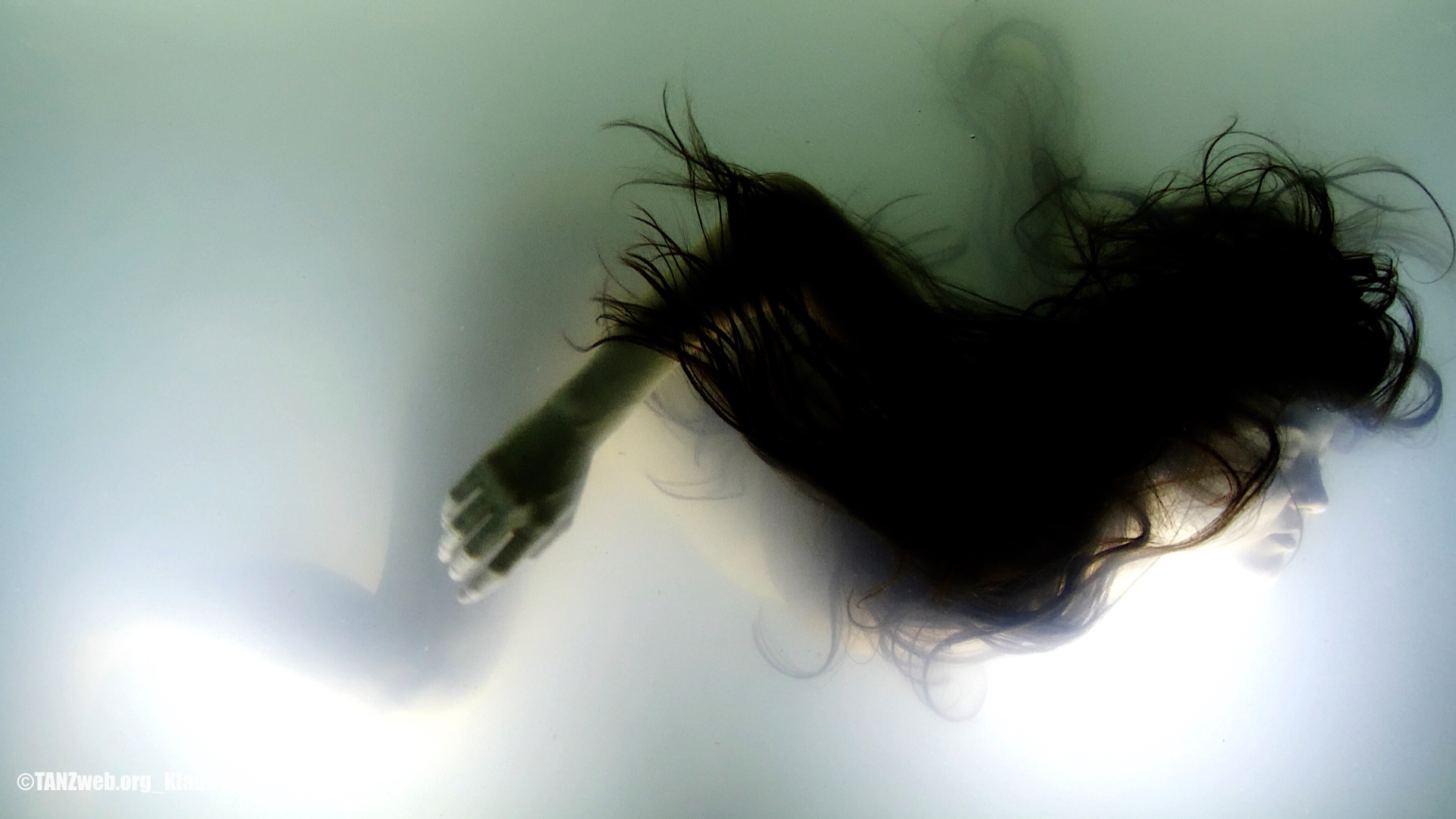
DOUBLE-HELIX_Nanine-Linning©TANZweb.org_Klaus-Dilger
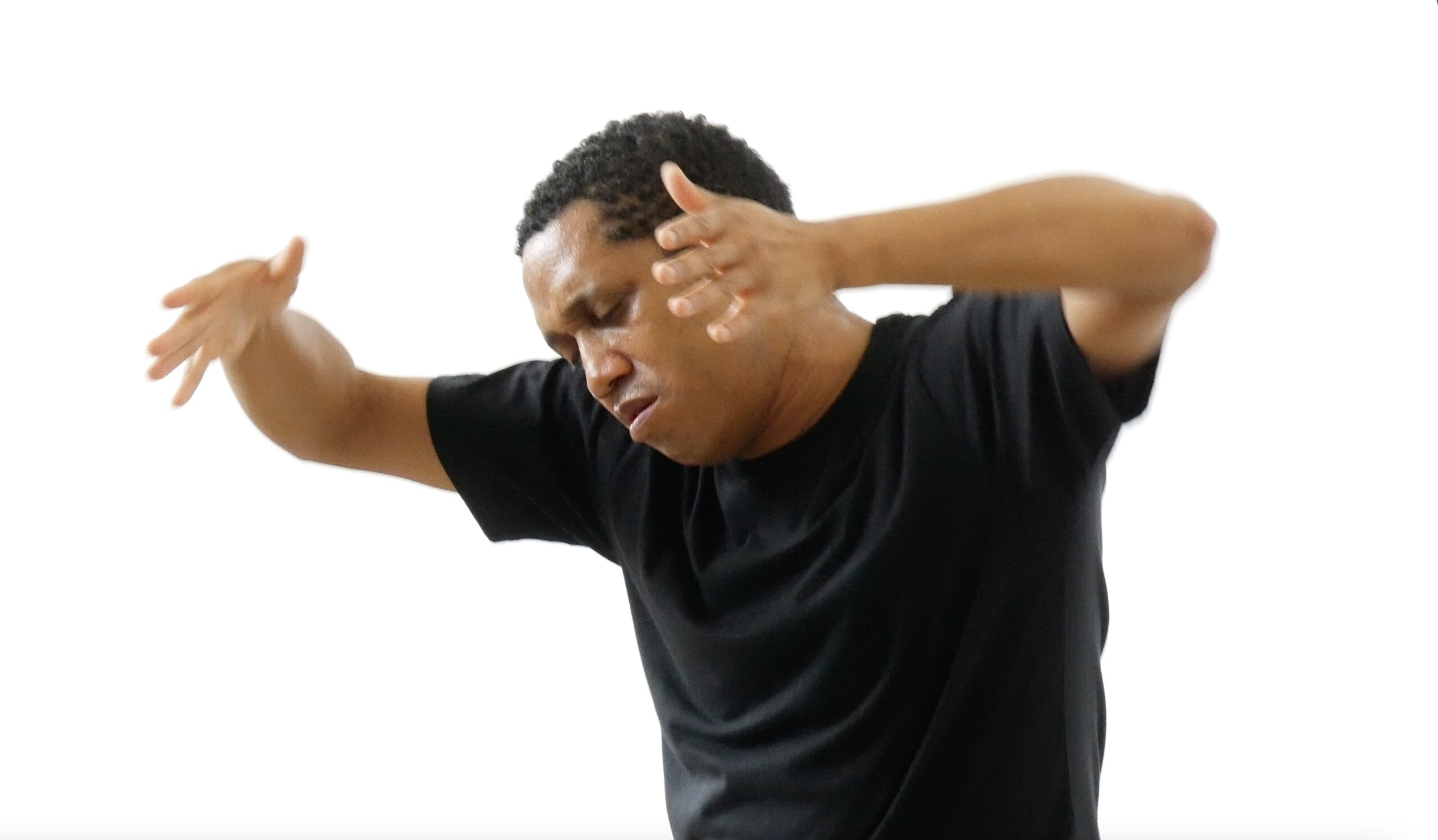
TRajal-Harrell_Sister-or-He-Buried-The-Body©TANZweb.org_Klaus-Dilger
„Sister or He Buried the Body“ by Trajal Harrell at Ludwig Forum Aachen.
It is an intimate solo performance, an emotional dance piece that celebrates its German premiere in the open space of Ludwig Forum for International Art. Already commissioned by the 13th Gwangju Biennale in 2021, the work could not be premiered until 2022 due to Corona.
U.S. dancer and choreographer Trajal Harrell focuses on Japanese Butoh in „Sister or He Buried the Body.“ In the great dance encyclopedia by Annette Hartmann and Monika Woitas, the definition is as follows: „Butoh is an expressive dance created in 1958 by the Japanese artists Tatsumi Hijikata (1928-1986), Ōno Kazuo (1906-2010) and Mitsutaka Ishii (1939-2017). The first impulses go back to the German expressive dance of the 1920s. The intention was to perform deliberately clumsy and imperfect movements, contrary to common ideals, in order to explore hitherto unused possibilities of the dancing body with imagination and freedom. Butoh is an expression of the soul and makes use of repressed states of consciousness.“
Since 2013, Trajal Harrell has been working intensively on this dance form, for example in „Used, Abused, and Hung Out to Dry“ for MoMA in New York; and at some point you come across the story of Tatsumi Hijikata’s sister, as he is explaining it himself. According to legend, she lived as a prostitute and died an early death. Hijikata probably often spoke of his sister now living on in his body, dancing inside of him and thus her body is archived in his. This myth is subject to this remarkable, half-hour solo performance, which finds form primarily in a seated position with hand dancing and six deeply heartfelt pieces of music (including „Jezebel“ by Sade and „Why Don’t You Do Right“ by Lil Green). Hijikata’s sister, as a prostitute, has sold her body for money; Tatsumi Hijikata, in turn, has apparently demanded money to impersonate his own sister; and Harrell, in turn, now embodies both of these spheres through unmistakable gestures, such as extending his open palm (money). Harrell also thinks along the lines of African-American dancer-choreographer Katherine Dunham (1909-2006) who is being considered as a pioneer of modern dance. Trajal Harrell dedicated the performance „Deathbed“ to her, which premiered at the Kunsthalle Zurich in 2022. Anyway, in 1957 Katherine Dunham performed with her Dance Company in Tokyo; her voodoo dance and the way she dealt with female sexuality influenced Hijikata immensely and he is said to have started wearing black make-up while dancing Butoh – there was a common exotic fascination in Japan at that time. Trajal Harrell now gives all three of them – Tatsumi Hijikata, his sister and Katherine Dunham – one/his body and lets them enter into dialogue with each other again or at all, in the here and now and thus also writes a current, contemporary dance history.
Archives preserve and organize the myths and history of Butoh and at the same time make them accessible to interested parties. In this respect, Trajal Harrell’s dance exploration of this dance form can almost be understood as a time capsule and is perfectly located in the museum space, seems almost curated in terms of dance history.
Eva Birkenstock, who has been the director of the Ludwig Forum Aachen since October 2021, is extremely pleased to cooperate with schrit_tmacher festival and directly brought up the German premiere of the co-production „Sister or He Buried the Body“. Almost exactly 30 years ago, Rick Takvorian, who was managing the events at the Ludwig Forum Aachen at the time, founded the festival in the basement there. Over the years the festival became bigger and bigger but the cooperation and connection to Ludwig Forum became smaller and smaller, until it disappeared completely. This is why it is all the more gratifying that it is now being revived and celebrated its beginning with such an eminent dance piece.
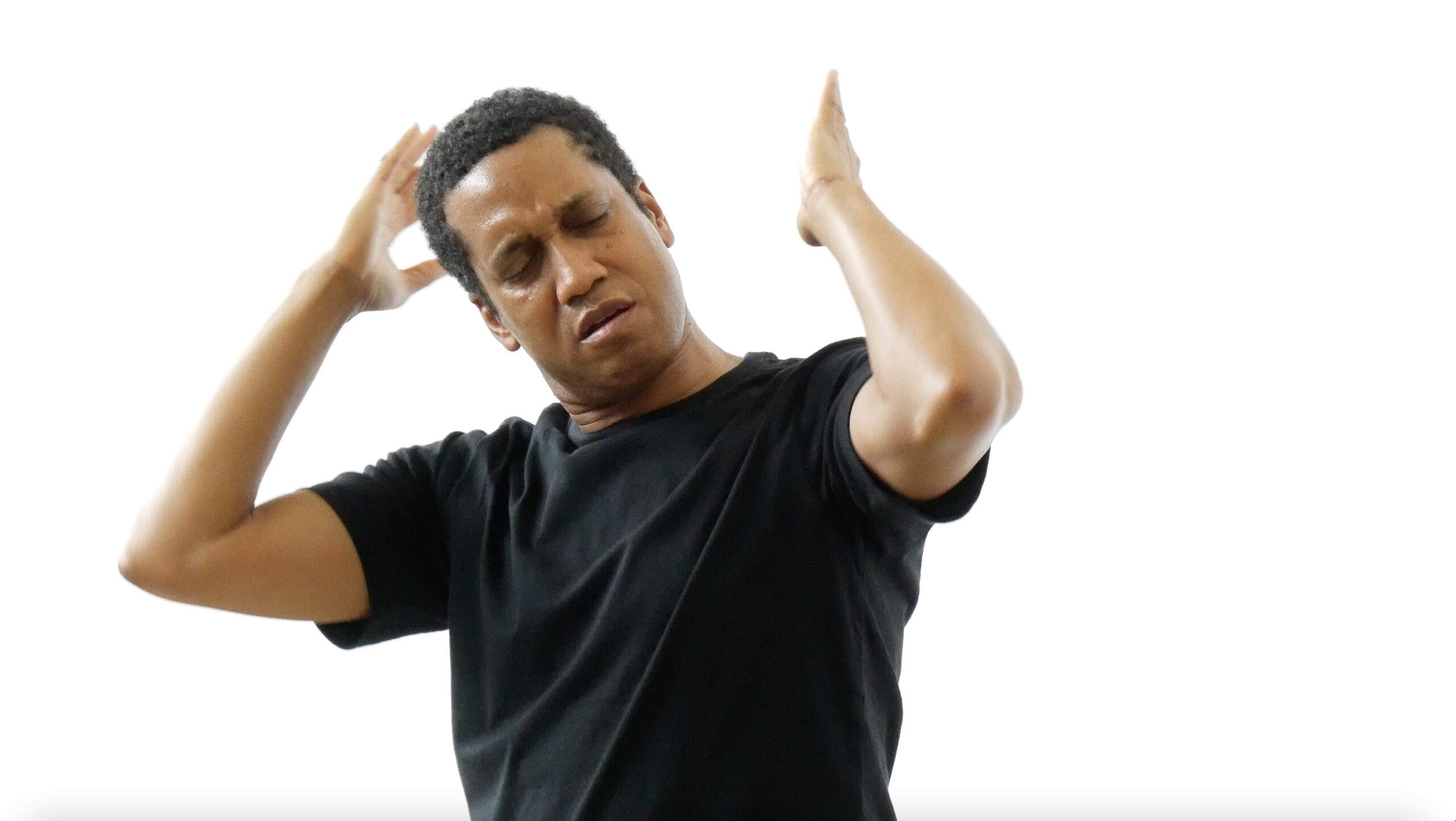
TRajal-Harrell_Sister-or-He-Buried-The-Body©TANZweb.org_Klaus-Dilger
„Danse – Dance – Dans – Danza – Tanz!“ at HfMT Aachen.
Another cooperation, which had been planned for a proud 15 years, also and finally found its start: schrit_tmacher justDANCE! and the University of Music and Dance Aachen are now collaborating. At the beginning of this cooperation, on Friday in the concert hall of the university, the students of the different instrumental classes presented 15 pieces of music, all of which either have a dance core or invite to dance. From the 2nd movement of the „Concierto de Aranjuez“ for piano and guitar by Spanish composer Joaquín Rodrigo to Johann Sebastian Bach’s cello suite „BWV 1010“ and Jacques Offenbach’s „Can Can“ – interpreted by a wind quartet – there had been an incredible amount of variety. In between the mainly classical pieces, student Sehun Lim repeatedly played short songs by the Venezuelan composer and guitarist Antonio Lauro. It was impressive how many pieces of music were performed by heart and the students really deserved the immense applause. The real dance of the evening could be seen the hands and fingers of the students, which moved delicately, soulful and almost hypnotizing over the instruments.
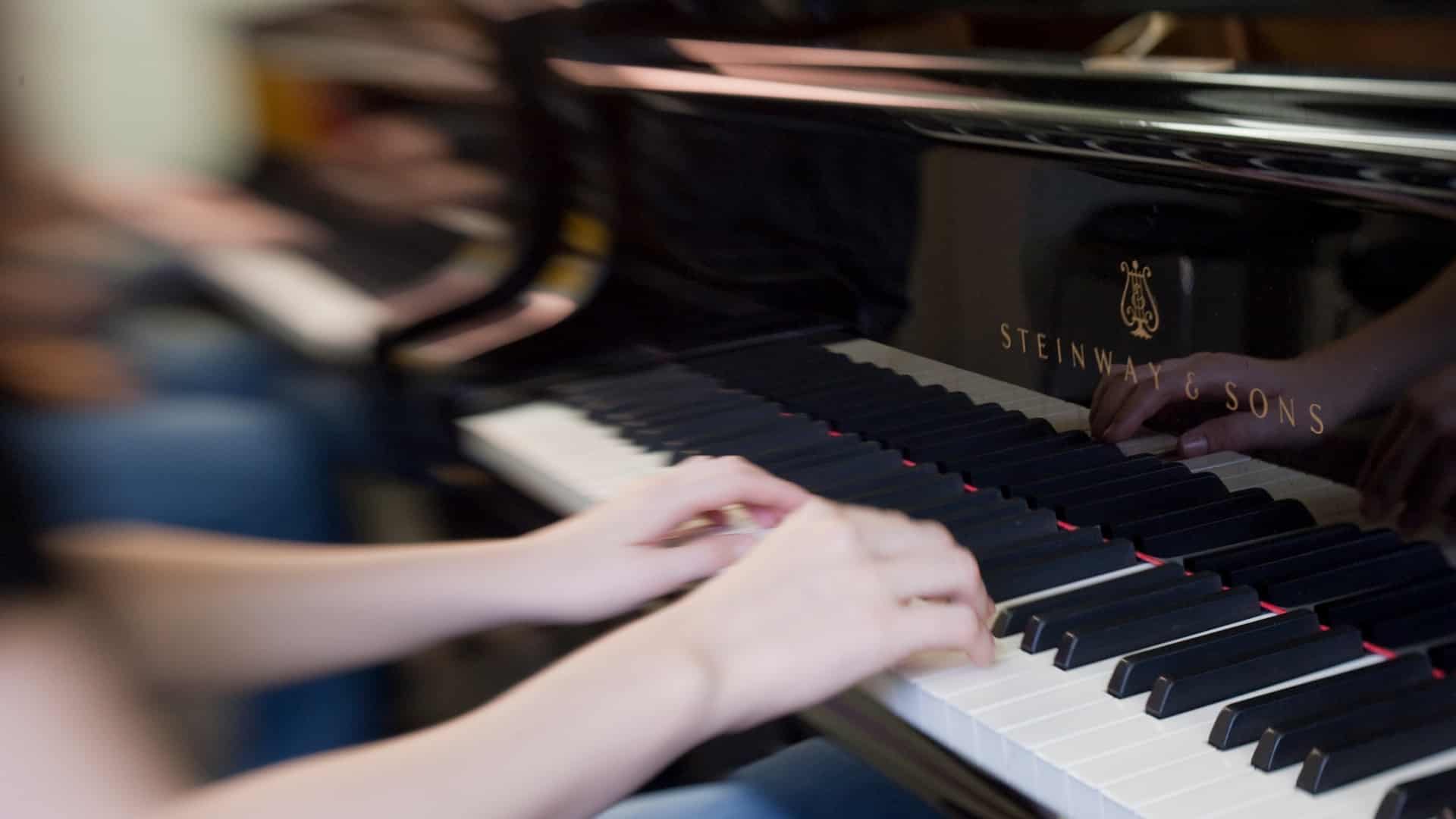
Danse_Dance_Dans_03.03.23_Hochschule-fuer-Musik-und-Tanz_Klavier

